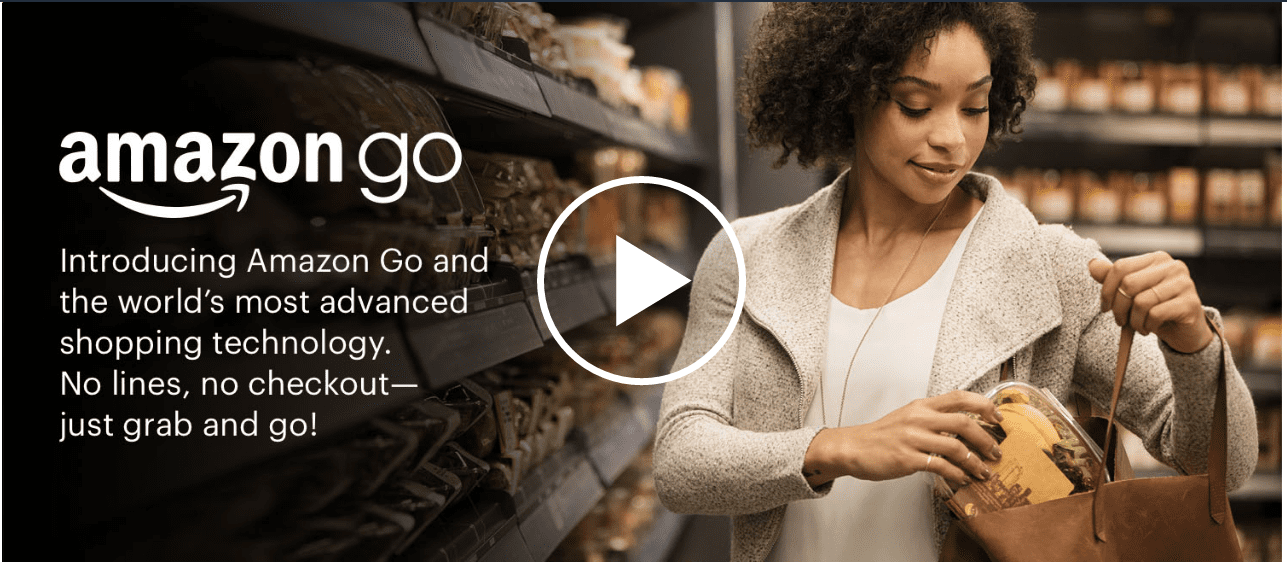 Amazon has shaken the grocery food segment this week with the announcement that they intend to open 2000 Amazon Go grocery stores. Each store will be in the 2000-3000sf size range.
Amazon has shaken the grocery food segment this week with the announcement that they intend to open 2000 Amazon Go grocery stores. Each store will be in the 2000-3000sf size range.
When Amazon combines their Alexa (warehouse ordering) and opening 2000 brick and mortar stores, they meet the needs of a large portion of consumers. By offering both concepts, customers can have daily staples delivered when needed and they can pick up quick items like meals, vegetables, and milk by walking into a small grocery store and use the “Just Walk Out” technology without standing in long lines at a typical grocery store.
Amazon is a company that knows what the consumer wants and time and again it provides it. While grocery chains continue to build ever larger stores to meet every possible want for the consumer, Amazon realizes that there are two important needs for the consumer.
- They have a need for staples like coffee, detergent, dog food, crackers and other items that they are willing to buy and have delivered the next day.
- Most consumers are rushed and their time is increasingly more valuable and stopping at a large grocery store does not fit their time needs. They also do not want to take the time to prepare and cook their meals.
The consumers trust Amazon pricing and has been trained to believe that Amazon’s pricing will be competitive.
Amazon through their Echo and Alexa devices is becoming an important part of their customer’s life style. Simply by asking Alexa to order the dog food when needed is effortless for the consumer. You simply speak to Alexa and tell her to order and it appears the next day at your door. Amazon also redefined online ordering with their one click buying on their web site. It is easy and convenient. The consumer picks out what they want and in one click it is sent to you. Alexa is an improved new form of one click shopping.
What Amazon has determined is that for many people, they are looking for something quick and easy. During the busy work week meals take too much time and energy. The consumer wants convenience and quick preparation. Many working parents, singles and the ever-increasing senior population don’t want to take the time to prepare a balanced meal at dinner time. They don’t want to deal with leftovers or clean up. Amazon is researching and learning what individuals and families want and need for non-staple purchases during the work week. One conclusion is that if they provide prepackaged meals the consumer will buy at an Amazon Go store on their way home from work or close to where they live. They know the consumer will react positively if the meal is balanced, healthy, with little clean up. What could be easier and with less hassle than to walk into a store close to where you work or on the way home and pick up what you want for dinner. The store sizes are small and conveniently located close so the consumer can pop in and out quickly without hassle; purchase what they want and “Just Walk Out”. You simply add the meal to your own shopping bag and walk out of the store. No hassles waiting in a checkout line. You bag the meal and leave.
This is how it works. They call the technology “Just Walk Out”. They have created Amazon Go app for your smart phone. You run the phone over a sensor when you enter the store and it automatically senses when you take a product off the shelf or when you replace it on the shelf and it keeps them in a virtual cart. When you are finished shopping, “Just Walk Out”. Shortly after your visit they will charge your account and send you a receipt. All the consumer needs is a smart phone, the Amazon Go app, and an account at Amazon. By offering this service and the convenience of avoiding long checkout lines it saves time and makes the purchase easy.
Major grocery chains have long realized the need for quick and convenient meal solutions, and over time they have added items such as cooked chickens and bakery items to meet this demand. Amazon is just taking the concept to the next level.
Amazon.com Inc. is almost single handedly lifting productivity in retailing. J.P. Morgan notes the average internet retailer generates $1.3 million in sales per employee, compared with the average brick-and-mortar retailer’s $279,000. As Amazon’s market share has grown, that has lifted the entire industry’s productivity performance. Retail output per hour rose 3% in the past year, compared with 0.8% for business as a whole.
Feel free to contact Velocity Retail Group to discuss the Amazon impact on your retail, office and industrial properties.


